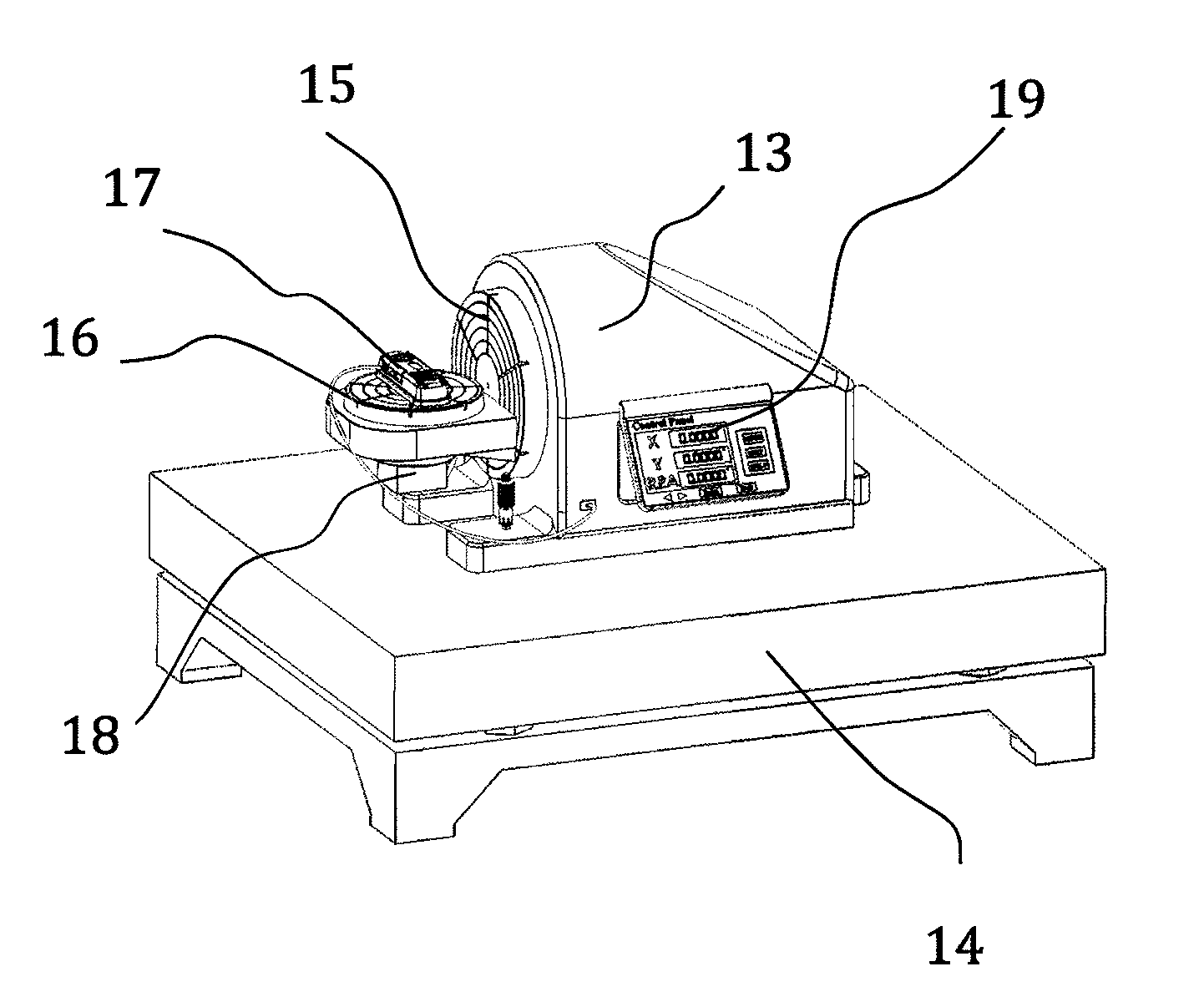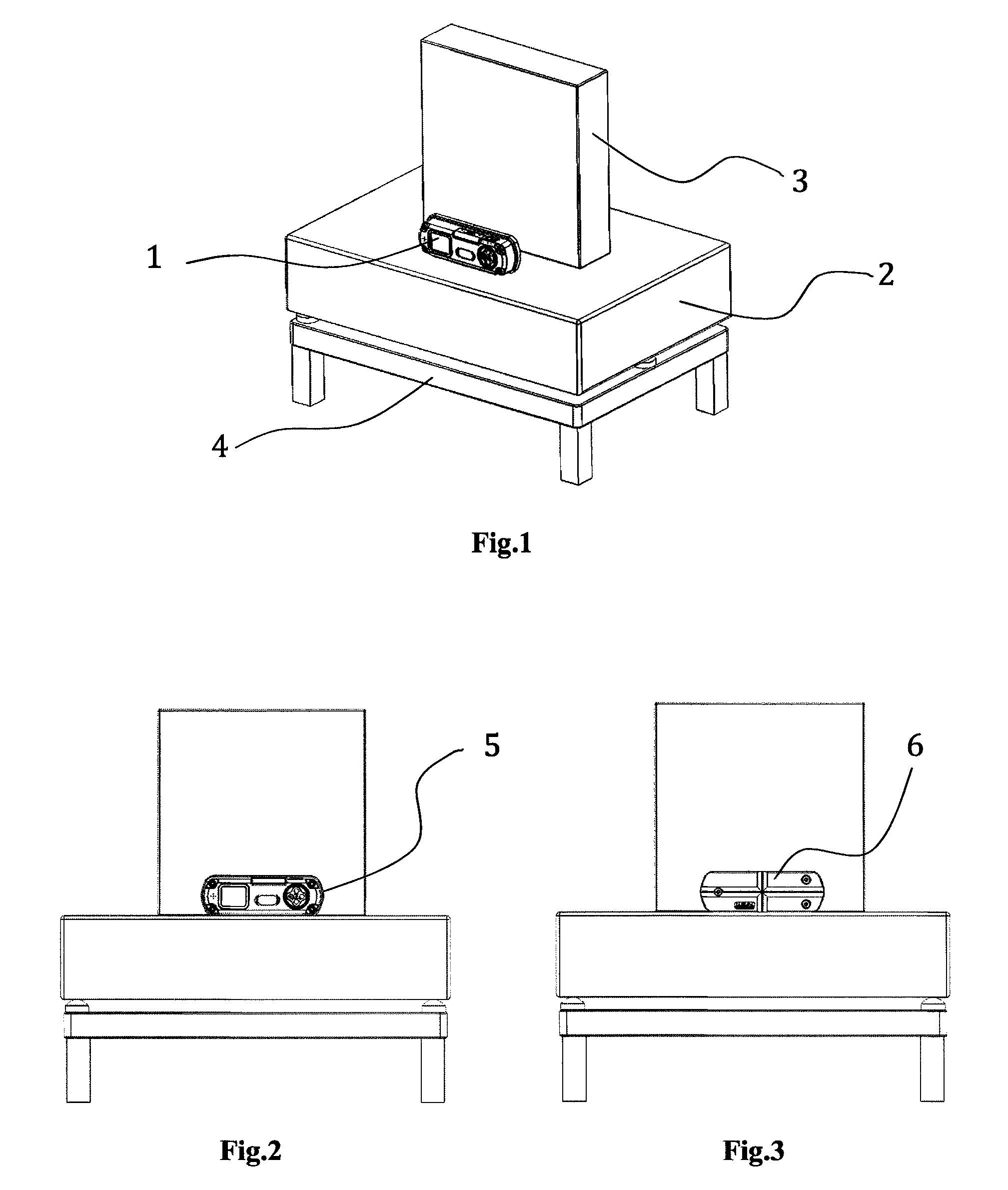Angle measuring device and methods for calibration
a technology of calibration and measuring device, applied in the direction of measuring device, instruments, etc., can solve the problems of affecting cost and delivery lead time, undoubtedly ineffective, and operator dependen
- Summary
- Abstract
- Description
- Claims
- Application Information
AI Technical Summary
Benefits of technology
Problems solved by technology
Method used
Image
Examples
Embodiment Construction
[0034]The calibration method used for setting the 2-axis digital angle measuring instrument is to configure both X and Y sensors reference angular plane positions as shown in FIG. 1 to FIG. 9. The digital angle measuring instrument or device may include any of a variety of orientation sensors that may be disposed in the device, for example in one or more microelectromechanical systems (MEMS) chips or the like. For example, the orientation sensors may include vibration sensors for detecting vibration magnitude in X, Y and Z directions of the cartesian coordinate system, azimuth sensors for detecting angular position change in one or more directions or in parallelism measurements, weight or pressure sensors, or any other desired orientation sensors such as accelerometers or gyroscopes. According to FIG. 1, the 2-axis digital level 1 is preferably placed on a levelled granite table 2 and a granite master square 3 supported by a metal frame 4.
[0035]According to FIG. 2 to FIG. 9 illustra...
PUM
 Login to View More
Login to View More Abstract
Description
Claims
Application Information
 Login to View More
Login to View More - R&D
- Intellectual Property
- Life Sciences
- Materials
- Tech Scout
- Unparalleled Data Quality
- Higher Quality Content
- 60% Fewer Hallucinations
Browse by: Latest US Patents, China's latest patents, Technical Efficacy Thesaurus, Application Domain, Technology Topic, Popular Technical Reports.
© 2025 PatSnap. All rights reserved.Legal|Privacy policy|Modern Slavery Act Transparency Statement|Sitemap|About US| Contact US: help@patsnap.com



